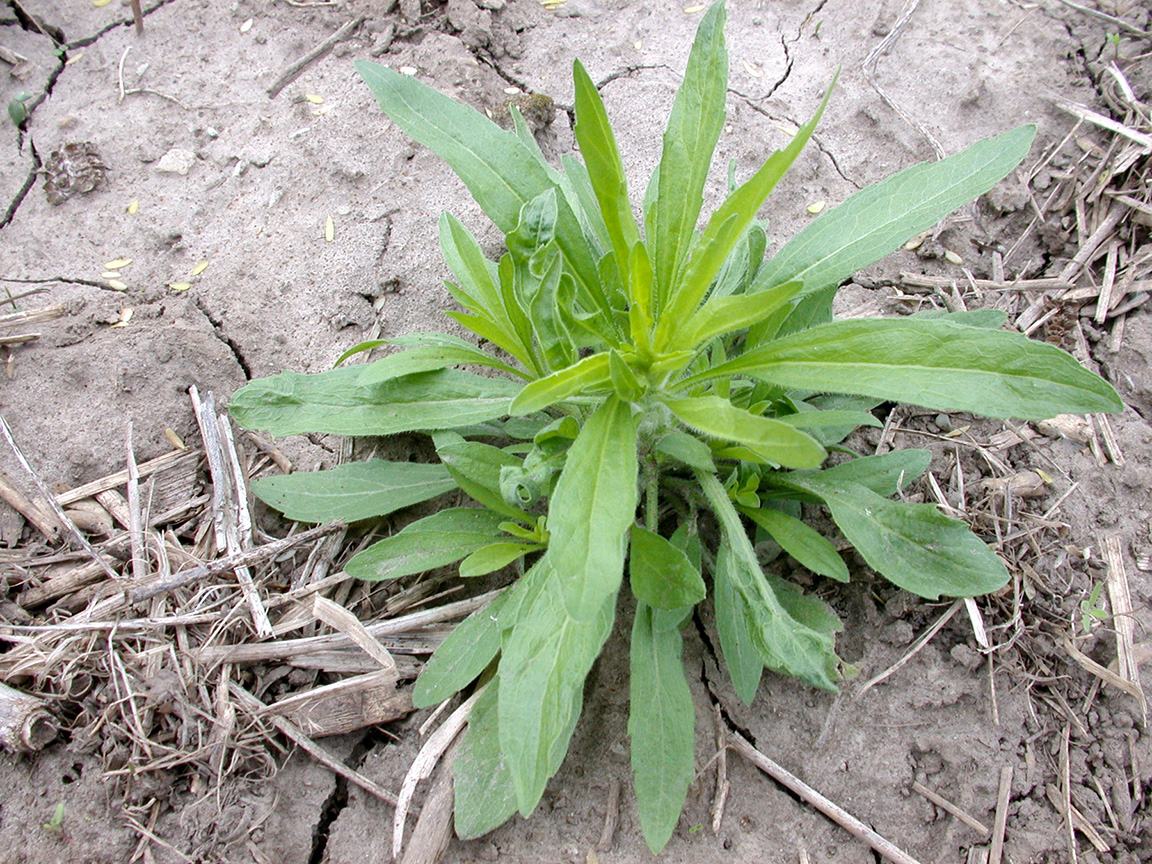As our crops come out of the field, now is the time to think about weed control for winter annual weeds, including marestail. Scouting fields should begin soon after a field is harvested, with special attention paid to fields with heavy infestations of marestail this year. With fall applied herbicide season about to begin, we wanted to provide a few application tips to those who are in the process of making fall herbicide applications.
-
-
- Scout fields and determine whether you need an application. Not all fields need an application, however, if you pull back the residue, especially in corn fields, you are likely to find infestations of winter weeds. Winter weeds could be particularly prevalent in both soybean and corn stubble this year because we had excessive amounts of rain over the past month.
- We have known cases of glyphosate-resistant and ALS-resistant marestail in most counties in Indiana and we have noticed a substantial number of fields with marestail in them late this summer that either were not controlled by postemergence herbicides or emerged after postemergence herbicides were applied. It would be wise to treat fields with marestail with a combination of dicamba and 2,4-D as part of the herbicide program. Fields that are harvested early would benefit with the addition of 4 to 6 ounces of metribuzin to provide residual control of marestail this fall until the ground freezes. This residual will not last into the spring, but will help with late-fall emerging plants. Fields harvested later in October or November may not need metribuzin unless it stays warm late into the fall.
- The best time to apply herbicides in the fall is on days when the morning low is above freezing. The best foliar herbicide activity will occur when you have a few days of warm daytime air temperatures (50’s or higher) and applications are made in the middle of this period. If fall applied herbicides are needed, one should not leave the sprayer in the shed if daytime temperatures do not get into the 50’s. Just remember that the foliar activity of systemic herbicides like glyphosate and 2,4-D is less in cool conditions. In these conditions, it would be advisable to use residual products tankmixed with the foliar products to provide residual activity for periods when weather conditions might allow additional weed emergence.
- Dandelions can still be controlled with fall applications of 2,4-D or a glyphosate product. Use a minimum of 1 qt/A of 4 lb/gallon 2,4-D products and 1 qt/A (0.75lb ae/A) of a glyphosate product. Either 2,4-D or a glyphosate product works very effectively in the fall. Once we have had a couple of hard frosts, the dandelions may be a litter tougher to control, so don’t rely on reduced rates.
- In fields with heavy corn residue, increase spray volume or decrease speed to increase carrier volume. Many weeds will be shielded by residue, so spray coverage can be compromised. In addition, use of residual products in these situations will increase the consistency of winter weed control because these products can be washed off of the corn residue with precipitation and into the soil where they can be effective.
-



